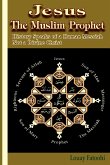Resolved under the Seventh Ecumenical Council, Iconoclasm was a movement within the Eastern Christian Byzantine church to establish that the Christian culture of portraits (see icon) of the family of Christ and subsequent Christians and biblical scenes were not of a Christian origin and therefore heretical. There were two periods of Iconoclasm 730-787 and 813-843. This movement itself was later defined as heretical under the Seventh Ecumenical council. The group destroyed much of the Christian churches' art history, which is needed in addressing the traditional interruptions of the Christian faith and the artistic works that in the early church were devoted to Jesus Christ or God. Many Glorious works were destroyed during this period. Iconoclasm as a movement began within the Eastern Christian Byzantine church in the early 8th century, following a series of heavy military reverses against the Muslims. Sometime between 726 730 the Byzantine Emperor Leo III the Isaurian ordered theremoval of an image of Jesus prominently placed over the Chalke gate, the ceremonial entrance to the Great Palace of Constantinople, and its replacement with a cross.
Bitte wählen Sie Ihr Anliegen aus.
Rechnungen
Retourenschein anfordern
Bestellstatus
Storno








